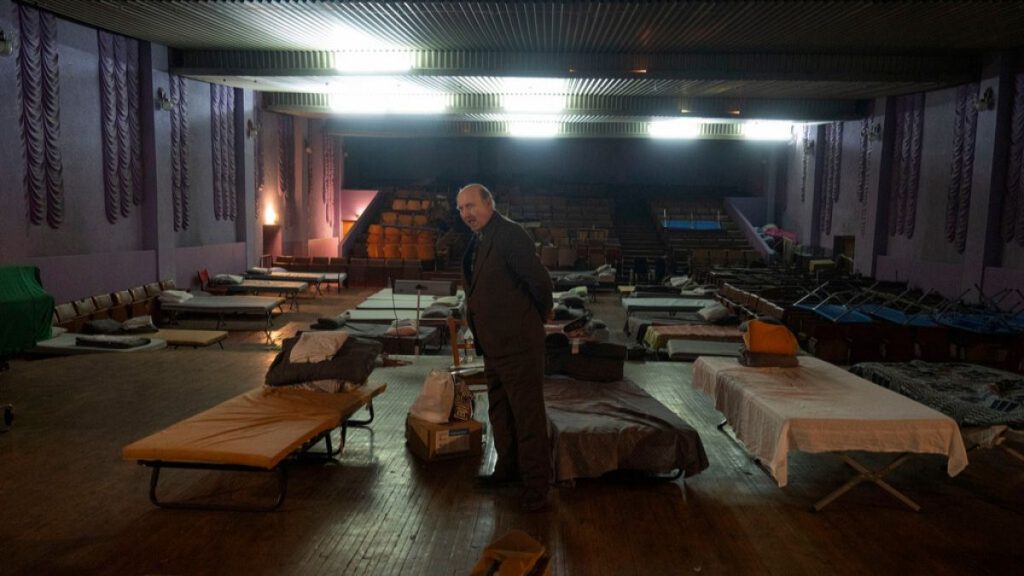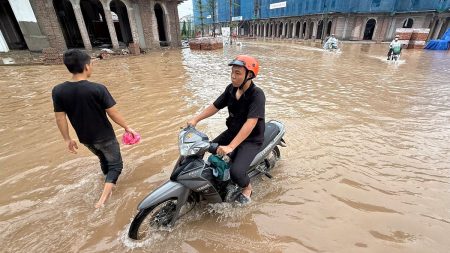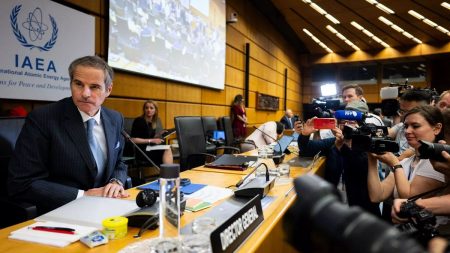The recent large-scale aerial assault on Ukraine, launched by Russia on Friday, has further intensified concerns about the Kremlin’s strategic intentions to undermine the country’s energy infrastructure as the harsh winter season approaches. This attack, characterized by the deployment of a barrage of rockets, drones, and even the formidable Kinzhal ballistic missile, follows a pattern of similar strikes targeting Ukraine’s power grid, raising alarms about Moscow’s potential strategy to cripple the nation’s ability to provide essential services like heating and water during the frigid winter months. Ukrainian Energy Minister Herman Halushchenko confirmed the attack’s focus on the energy grid, emphasizing the ongoing nature of Russia’s “terror” campaign against Ukrainian civilians.
The attack unfolded in stages, beginning with swarms of strike drones launched overnight, followed by multiple cruise missile launches within Ukrainian airspace. The air force also reported the alarming use of Kinzhal air-launched ballistic missiles, showcasing the intensity and sophistication of the offensive. This coordinated barrage suggests a calculated effort to overwhelm Ukrainian defenses and inflict maximum damage on the energy infrastructure, jeopardizing the well-being of millions of citizens as winter sets in. The use of the Kinzhal missile, known for its hypersonic speed and maneuverability, underscores a potentially escalating level of aggression on Russia’s part.
This latest assault represents another chapter in a series of attacks that have repeatedly disrupted Ukraine’s energy system since the onset of the invasion in 2022. These attacks consistently target critical infrastructure, leading to the disruption of vital heating and drinking water supplies, particularly during the harsh winter months. This tactic appears aimed at eroding Ukrainian morale and resilience by inflicting hardship and suffering on the civilian population. While Moscow claims that these strikes target Ukraine’s defense industry, the consistent focus on civilian infrastructure, and particularly the energy grid, suggests a broader strategy to weaken the country’s overall resilience and capacity for resistance.
The repeated targeting of the energy grid raises serious humanitarian concerns as winter approaches, threatening to leave millions vulnerable to freezing temperatures without access to essential heating and water. The deliberate nature of these attacks on civilian infrastructure, seemingly aimed at maximizing human suffering, has been widely condemned as a violation of international law. The persistent nature of these attacks raises questions about the long-term stability of Ukraine’s energy sector and the potential for widespread humanitarian crisis during the winter.
The ongoing attacks on Ukraine’s energy infrastructure highlight the urgent need for international support to strengthen the country’s resilience and ensure the provision of essential services. The escalating nature of these attacks, demonstrated by the use of advanced weaponry like the Kinzhal missile, underscores the need for robust air defense systems and other protective measures. International partners must continue to provide assistance in rebuilding and reinforcing Ukraine’s energy grid, ensuring the population’s access to essential services and mitigating the potential for a large-scale humanitarian crisis during the winter.
Beyond the immediate humanitarian implications, the persistent attacks on Ukraine’s energy infrastructure reveal a deeper strategic dimension to the conflict. By targeting the very systems that sustain life and enable society to function, Russia aims to undermine Ukraine’s overall capacity for resistance, potentially intending to create conditions that could facilitate further territorial gains or impose a harsher negotiating position. Understanding this strategic dimension is crucial for formulating effective countermeasures and providing the necessary support to Ukraine to withstand these attacks and maintain its sovereignty and independence.














